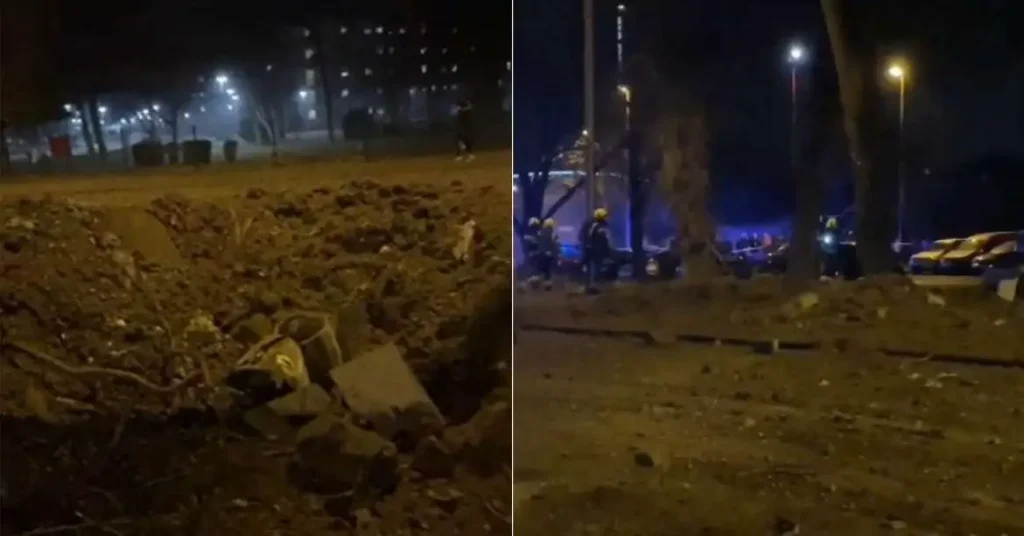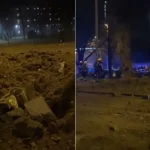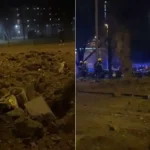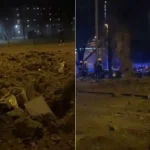As Index/Nenad Jaric Dauenhauer writes, as Index learned during the night from some well-informed sources, according to the information gathered so far, which was obtained by the competent services during the investigation, a drone crashed in Zagreb close to Jarun last night. The crater at the impact site is about one metre deep and about three meters wide. You can read about the event itself and the investigation until now here.
Tyler Rogoway, a military aviation expert and editor of The War Zone on The Drive, has claimed that the cause of the Zagreb explosion and the pieces of aircraft found left behind was a Tu-141 drone.
The Tu-141, or Swift, is an unmanned Soviet reconnaissance drone that served as part of the Soviet Red Army during the late 1970s and 1980s.
It is important to note that the police have NOT yet confirmed this, but if these speculations are confirmed, one of the bigger mysteries will be the answer to the question of how the Tu-141 managed to fly from Ukraine, through Hungary all the way to Zagreb, and how no NATO, Hungarian or Croatian radars managed to even detect it on that utterly strange trip here.
The Ministry of Defense of Ukraine announced back in 2016 that the Ukrainian Air Force was rebuilding 68 different types of military aircraft from the Soviet era, including the Tu-141 drone.
What is the Tu-141?
The Tu-141 isn’t like modern Predator or Reaper drones, which can fly for a long time while scanning using high-tech sensors. This robotic spacecraft was also not originally intended for combat activities, ie for destruction and killing.
The Tu-141 is designed to perform reconnaissance missions several hundred kilometres behind the front lines at supersonic speeds. It can carry a range of payloads, including film cameras, infrared recording devices, EO recorders and recording radars. It was in Soviet service from 1979 to 1989, mostly on the western borders of the former Soviet Union.
The Tu-141 is 14.33 m long, has a wingspan of 3.88 m and a height of 2.44 m. It has delta or arrow-shaped wings of 10.0 m2 and weighs 6215 kg. It is powered by a powerful turbojet engine, Tumansky KR-17A, and can travel at a maximum supersonic speed of 1,100 km/h. Its range is 1000 km, and the highest altitude at which it operates is about 6000 m.
It is launched from a trailer using solid fuel. It doesn’t land like a conventional aircraft, but instead relies on a parachute and retro rockets that allow it to descend gradually in an upright and horizontal position.
There were 152 specimens, it isn’t known how many are left now
Ukraine hasn’t released any information on just how many Tu-141s remain in the country after the collapse of the Soviet Union, which began producing the drone on a regular basis back in 1979. The Soviet Union made 152 copies, and they were mostly stationed near the western borders of the former bloc.
According to a book by Russian aviation researcher Yefim Gordon, this Soviet/Russian drone has equipment which is comparable to the KA and KS high-altitude reconnaissance cameras used by the United States during the Cold War. According to Russian weapons and aviation analysts’ websites, the Tu-141 probably has a similar radar and infrared sensor as the Soviet reconnaissance jet Su-24MR Fencer E.
If this is true, then the Tu-141 equipment dates back to the late 1980s, which means it is probably not resistant to modern Russian interference. It is not known how Ukraine modernided and equipped any of its remaining Tu-141s.
For more on the Zagreb explosion, keep up with our news section.












